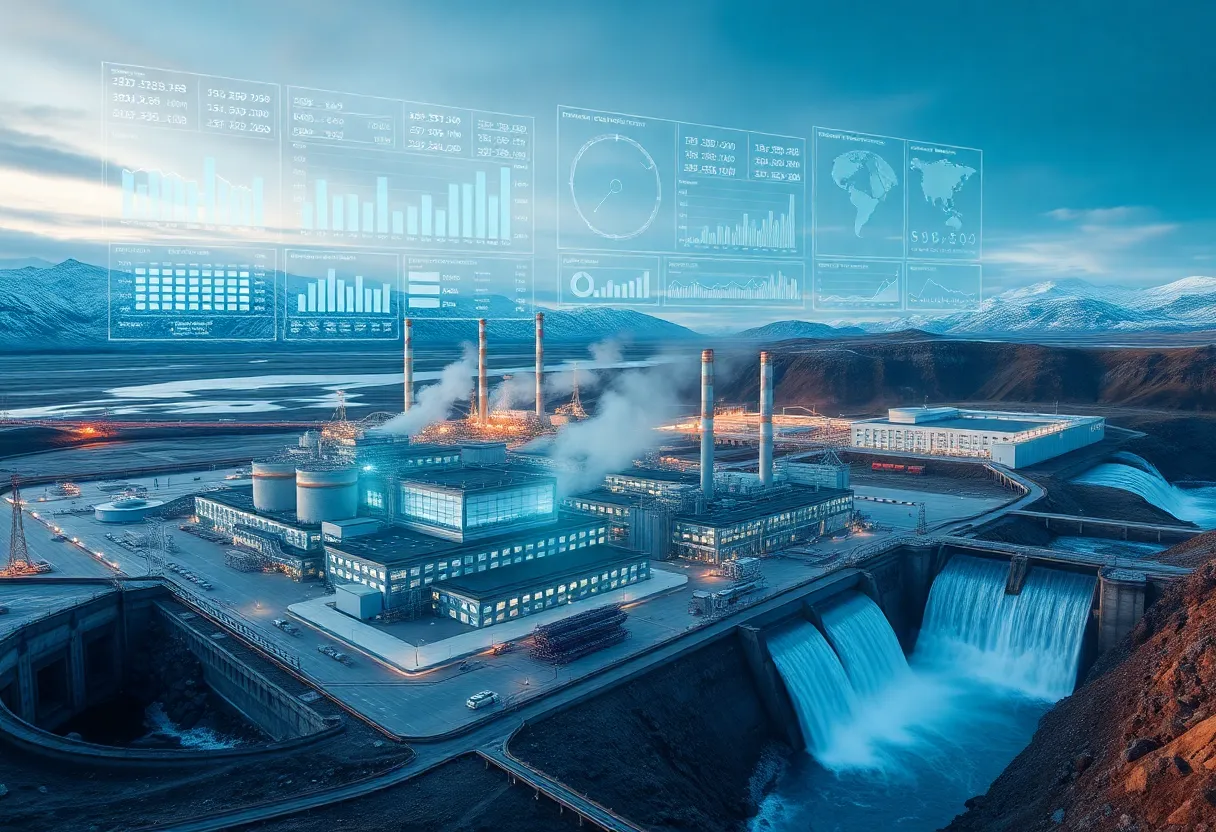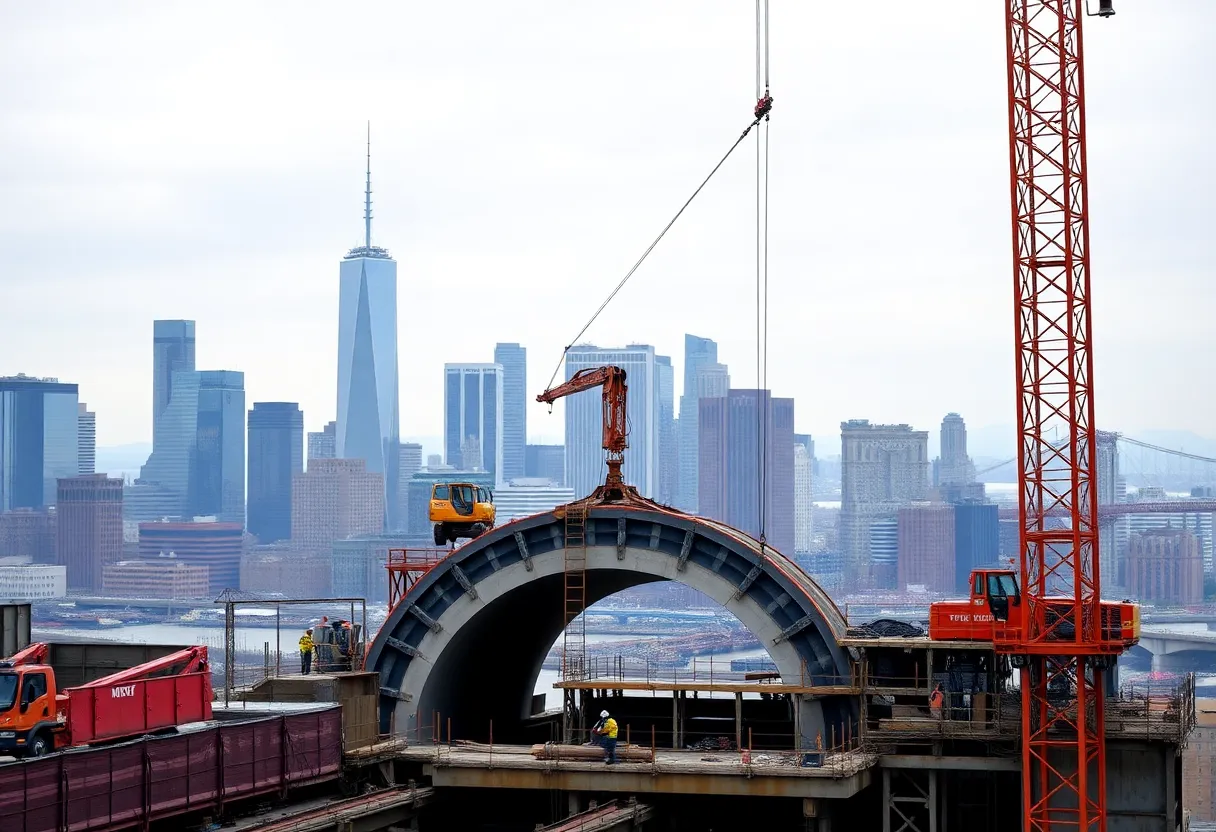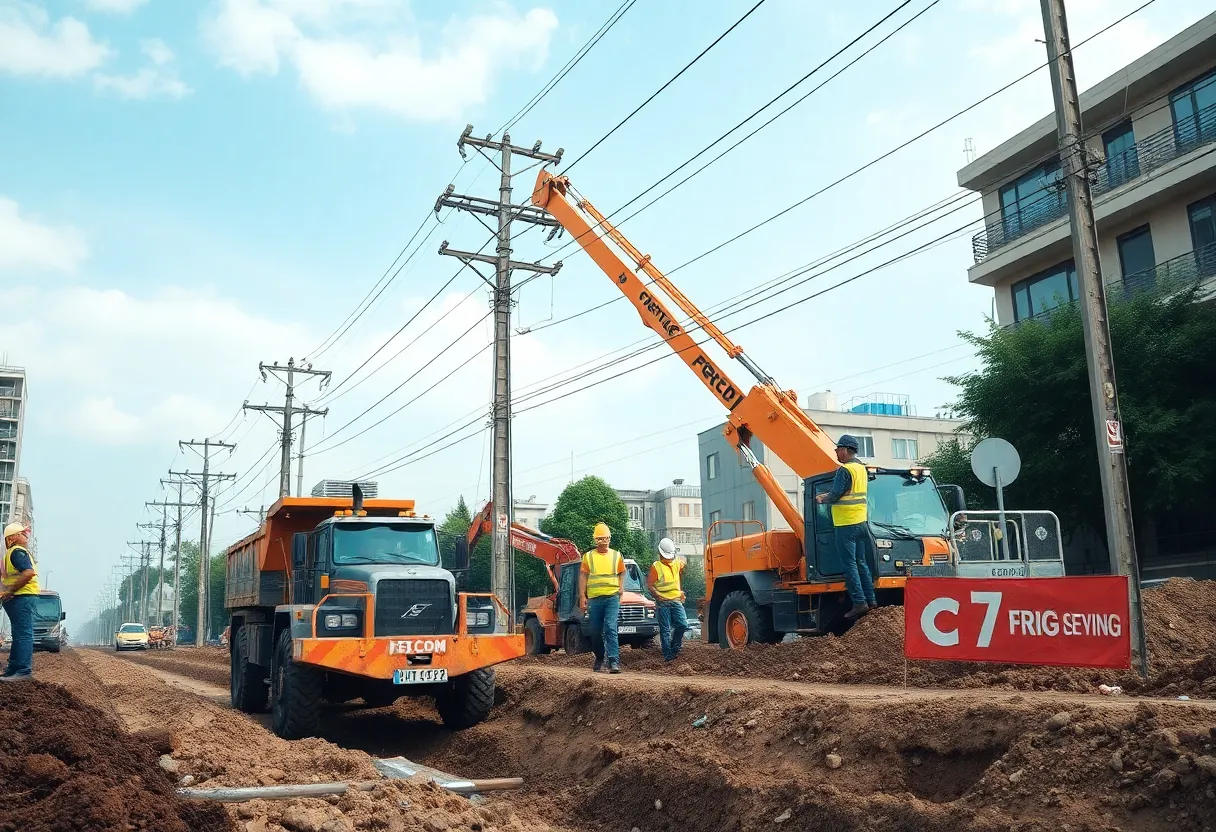Iceland, October 7, 2025
News Summary
Iceland’s renewable electricity and emerging industrial software are accelerating decarbonization across the aluminum supply chain. Icelandic firms like SnerpaPower are providing SaaS energy-management tools to smelters such as Norðurál, while startups like DTE supply real-time molten-metal analysis to boost recycling and process efficiency. The U.S. is also seeing momentum: a proposed Green Aluminum Smelter received initial DOE planning funding, and established firms are exploring low-carbon supply options. Partnerships between technology providers, recyclers and engineering firms aim to reduce emissions, improve energy use, and modernize an industry often hampered by older facilities.
Icelandic renewables and industrial software speed aluminum decarbonization while U.S. plans a new low-emission smelter
The aluminum sector is seeing converging changes: access to near-zero-carbon power in places like Iceland, new industrial software that automates electricity use and metal analysis, and a high-profile U.S. effort to build a low-emission primary smelter. These shifts aim to cut the sector’s sizable energy use and carbon footprint while keeping production reliable for markets such as electric vehicles, defense, and clean energy technology.
Top developments first
Century Aluminum Company is a Chicago-based firm. Century Aluminum was tapped for up to $500 million in financial assistance from the U.S. Department of Energy for a Green Aluminum Smelter Project. On January 15, the Energy Department announced a first tranche of $10 million toward its cost-share total of up to $500 million for the project. If built, the proposed smelter would be the first new primary smelter in the United States in 45 years and is billed as designed to avoid an estimated 75% of emissions from a traditional smelter.
Iceland: renewables plus software
Iceland’s near-total use of renewables has attracted smelters and enabled low-carbon production. The Icelandic electricity grid is entirely run on renewable energy from hydro and geothermal resources. Century Aluminum’s Norðurál subsidiary in Iceland markets a low-carbon product line and has entered an energy management agreement with SnerpaPower. SnerpaPower is an Icelandic company that has developed a SaaS industrial decarbonization platform. SnerpaPower’s platform enables facilities to automate their power schedules for maximum efficiency.
The software is being applied beyond smelters. Faxaflóahafnir provided shore power connections to smaller cruise ships as an alternative to maritime fuel, and the port is working on larger shore-power projects that will raise harbor electricity demand. SnerpaPower’s services are intended to give ports and large users real-time forecasting and automated scheduling to cut costs, simplify operations, and reduce local emissions.
Software, sensors and recycling technology
New sensor and analytics technology aims to make recycling and production safer and more efficient. DTE’s core technology is LP-LIBS™ (Liquid-Phase Laser-Induced Breakdown Spectroscopy), enabling in-situ elemental analysis of molten metal. That capability is intended to replace slow, hazardous manual sampling and to allow continuous data-driven control of alloy quality, scrap use, and energy intensity. DTE has partnered with an engineering firm to embed its analyzers into manufacturing lines and with a major aluminum buyer to boost recycled-content targets.
U.S. grid, renewables and market pressures
In the United States, older smelters and legacy plants make it harder to produce low-carbon aluminum compared with newer overseas operations. Century Aluminum has two facilities in Kentucky that draw 100% of their electricity from the MISO (Mid-Continent Independent System Operator) grid. MISO is a 15-state grid. MISO has been an early adopter of wind energy and has turned attention to solar in recent years. Projections put almost 13.8 gigawatts of added solar capacity on the MISO grid over the next three years, but a national-level slowdown in renewable buildout and a separate data center construction boom have complicated supply and market dynamics. MISO has shifted some near-term emphasis to natural gas while continuing to add renewables.
Industry and labor notes
Labor and operational stability are part of the decarbonization picture. A recently negotiated collective agreement involving Alcoa and local unions in Iceland was reached and a planned strike vote was canceled, with the agreement covering a multi-year term. Meanwhile, Icelandic startups that grew around the island’s smelter network are exporting expertise: energy-management SaaS, molten-metal analyzers, and pilot processes aimed at cutting CO2.
Why this matters
Aluminum production accounts for a material share of electricity use and global emissions, and the push toward EVs and low-carbon infrastructure raises demand for cleaner aluminum. Access to 100% renewable energy, automated power scheduling, in-line chemical analysis, and smarter recycling are tools being deployed to lower emissions while keeping products onshore for strategic uses. The U.S. DOE funding process, new partnerships between tech and engineering firms, and port and data-center demand patterns will shape how quickly low-carbon aluminum scales.
Frequently Asked Questions
Where is Century Aluminum based?
Century Aluminum Company is a Chicago-based firm.
How many Century Aluminum facilities in Kentucky use MISO power?
Century Aluminum has two facilities in Kentucky that draw 100% of their electricity from the MISO (Mid-Continent Independent System Operator) grid.
What is MISO?
MISO is a 15-state grid.
What is SnerpaPower?
SnerpaPower is an Icelandic company that has developed a SaaS industrial decarbonization platform.
What does SnerpaPower’s platform enable?
SnerpaPower’s platform enables facilities to automate their power schedules for maximum efficiency.
What is DTE’s core technology?
DTE’s core technology is LP-LIBS™ (Liquid-Phase Laser-Induced Breakdown Spectroscopy), enabling in-situ elemental analysis of molten metal.
What federal support did Century Aluminum receive for a new smelter?
Century Aluminum was tapped for up to $500 million in financial assistance from the U.S. Department of Energy for a Green Aluminum Smelter Project.
Has the Energy Department provided initial funding?
On January 15, the Energy Department announced a first tranche of $10 million toward its cost-share total of up to $500 million for the project.
What powers Iceland’s grid?
The Icelandic electricity grid is entirely run on renewable energy from hydro and geothermal resources.
What shore-power action has the Reykjavik port taken?
Faxaflóahafnir provided shore power connections to smaller cruise ships as an alternative to maritime fuel.
{
“@context”: “https://schema.org”,
“@type”: “FAQPage”,
“mainEntity”: [
{
“@type”: “Question”,
“name”: “Where is Century Aluminum based?”,
“acceptedAnswer”: {
“@type”: “Answer”,
“text”: “Century Aluminum Company is a Chicago-based firm.”
}
},
{
“@type”: “Question”,
“name”: “How many Century Aluminum facilities in Kentucky use MISO power?”,
“acceptedAnswer”: {
“@type”: “Answer”,
“text”: “Century Aluminum has two facilities in Kentucky that draw 100% of their electricity from the MISO (Mid-Continent Independent System Operator) grid.”
}
},
{
“@type”: “Question”,
“name”: “What is MISO?”,
“acceptedAnswer”: {
“@type”: “Answer”,
“text”: “MISO is a 15-state grid.”
}
},
{
“@type”: “Question”,
“name”: “What is SnerpaPower?”,
“acceptedAnswer”: {
“@type”: “Answer”,
“text”: “SnerpaPower is an Icelandic company that has developed a SaaS industrial decarbonization platform.”
}
},
{
“@type”: “Question”,
“name”: “What does SnerpaPower’s platform enable?”,
“acceptedAnswer”: {
“@type”: “Answer”,
“text”: “SnerpaPower’s platform enables facilities to automate their power schedules for maximum efficiency.”
}
},
{
“@type”: “Question”,
“name”: “What is DTE’s core technology?”,
“acceptedAnswer”: {
“@type”: “Answer”,
“text”: “DTE’s core technology is LP-LIBS™ (Liquid-Phase Laser-Induced Breakdown Spectroscopy), enabling in-situ elemental analysis of molten metal.”
}
},
{
“@type”: “Question”,
“name”: “What federal support did Century Aluminum receive for a new smelter?”,
“acceptedAnswer”: {
“@type”: “Answer”,
“text”: “Century Aluminum was tapped for up to $500 million in financial assistance from the U.S. Department of Energy for a Green Aluminum Smelter Project.”
}
},
{
“@type”: “Question”,
“name”: “Has the Energy Department provided initial funding?”,
“acceptedAnswer”: {
“@type”: “Answer”,
“text”: “On January 15, the Energy Department announced a first tranche of $10 million toward its cost-share total of up to $500 million for the project.”
}
},
{
“@type”: “Question”,
“name”: “What powers Iceland’s grid?”,
“acceptedAnswer”: {
“@type”: “Answer”,
“text”: “The Icelandic electricity grid is entirely run on renewable energy from hydro and geothermal resources.”
}
},
{
“@type”: “Question”,
“name”: “What shore-power action has the Reykjavik port taken?”,
“acceptedAnswer”: {
“@type”: “Answer”,
“text”: “Faxaflóahafnir provided shore power connections to smaller cruise ships as an alternative to maritime fuel.”
}
}
]
}
Key features at a glance
| Feature | Role | Impact |
|---|---|---|
| 100% renewable grid in Iceland | Power supply for smelters | Enables low-carbon aluminum production |
| SnerpaPower SaaS | Automated energy scheduling and forecasting | Improves efficiency and grid stability |
| DTE LP-LIBS™ | Real-time molten metal analysis | Replaces manual sampling; supports recycling and automation |
| DOE Green Aluminum Smelter Project | Federal support for new U.S. smelter | Could halve U.S. primary smelter emissions and expand domestic capacity |
| MISO grid | Regional electricity market | Supports wind and growing solar; balances renewables vs. natural gas |
Deeper Dive: News & Info About This Topic
Additional Resources
- CleanTechnica: A new tool for aluminum industry decarbonization (2025)
- Wikipedia: Aluminium smelting
- Fortune: Can Iceland help the U.S. clean up the aluminum industry? (2025)
- Google Search: Iceland aluminum industry US partnership
- Reuters: Alcoa warns tariff could cost 100,000 U.S. jobs (2025)
- Google Scholar: Alcoa aluminum tariff jobs 2025
- ArcticStartup: DTE and Ramboll partner
- Encyclopedia Britannica: Ramboll (search)
- Bloomberg: Iceland can manage 10% U.S. tariff, central bank chief says (2025)
- Google News: Iceland tariff aluminum 2025
Author: Construction NY News
The NEW YORK STAFF WRITER represents the experienced team at constructionnynews.com, your go-to source for actionable local news and information in New York and beyond. Specializing in "news you can use," we cover essential topics like product reviews for personal and business needs, local business directories, politics, real estate trends, neighborhood insights, and state news affecting the area—with deep expertise drawn from years of dedicated reporting and strong community input, including local press releases and business updates. We deliver top reporting on high-value events such as the New York Build Expo, infrastructure breakthroughs, and cutting-edge construction technology showcases. Our coverage extends to key organizations like the Associated General Contractors of New York State and the Building Trades Employers' Association, plus leading businesses in construction and real estate that power the local economy such as Turner Construction Company and CMiC Global. As part of the broader network, including constructioncanews.com, constructiontxnews.com, and constructionflnews.com, we provide comprehensive, credible insights into the dynamic construction landscape across multiple states.





